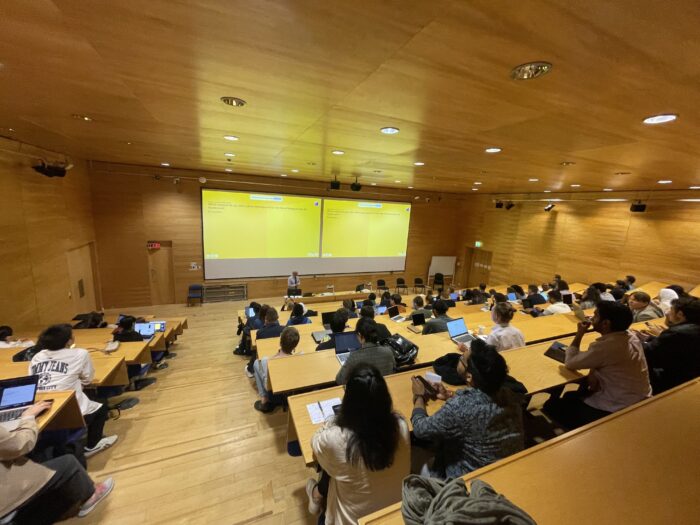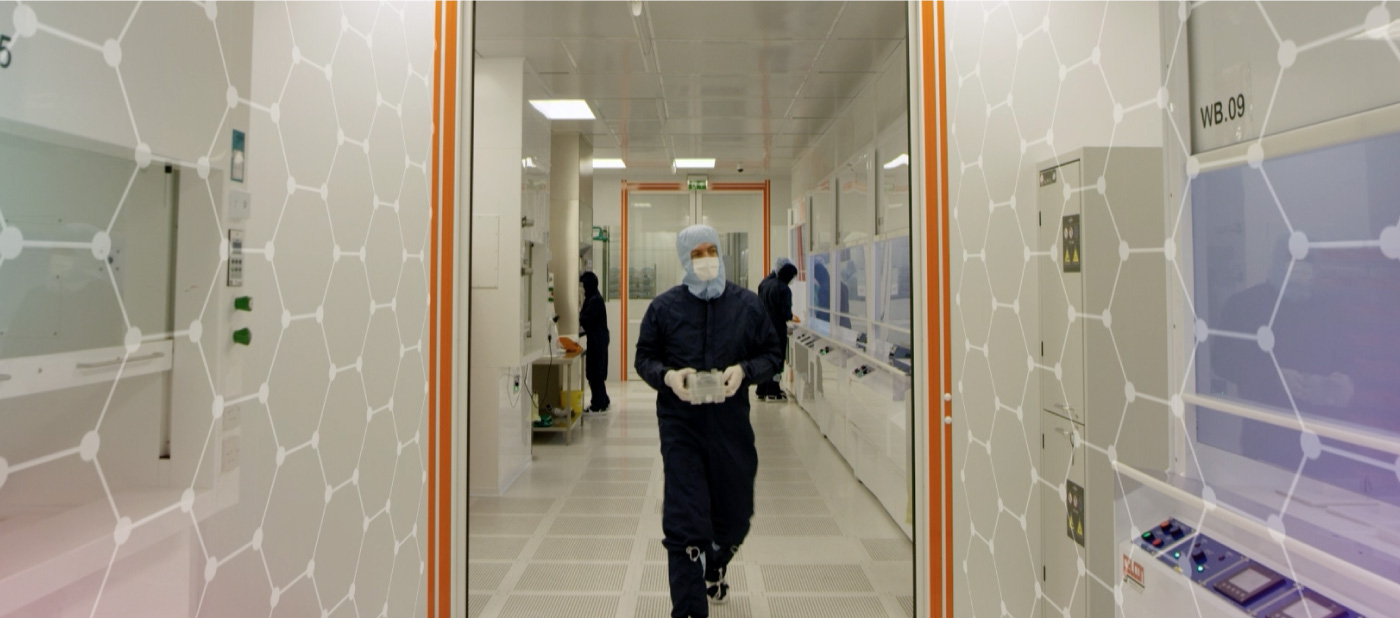The Cambridge Bioelectronics Symposium recently welcomed members of the international bioelectronics community to Cambridge for a three-day event combining extensive coverage of the current bioelectronics sector, hands-on-workshops and unique networking opportunities.

Since its inception in 2023, the Symposium is an annual event bringing together researchers across all career stages, encouraging a strong participation of young scientists.
Bioelectronics is the electronic monitoring and control of biological systems with applications translating to environmental, agricultural, healthcare and industrial sectors. It is an emerging, multidisciplinary field that spans several research areas including chemistry, biology, engineering, computer science and clinical applications, but similar to many other exciting fields of research, faces major challenges in translating developments into industry.
Recognising the significant potential of this sector, The Henry Royce Institute (Royce), along with partners ScotChem, the Centre for Process Innovation (CPI) and Urban Foresight, is developing a Materials for Bioelectronics in Healthcare Strategy and Action Plan to guide and inform universities and researchers, industry, the investment community, clinicians and healthcare bodies, and UK government policy, regulation and funding bodies.
The first phase, an Interim Report, was published earlier this year and maps activity and barriers within the field to surface areas of potential growth.
The 2024 Cambridge Bioelectronics Symposium
The event, held from 1st to 3rd July, was supported by Royce, ScotChem, CPI, and Urban Foresight and welcomed over 80 active researchers and industry professionals.
After an introduction to Royce and their strategy, ScotChem presented the scope and status of the sector. This was followed by a session led by CPI, which focused on roadmapping emerging applications and material capabilities, including introducing three grand challenges for future bioelectronic materials. Urban Foresight led a presentation on the strengths and challenges of translating material innovations into bioelectronic applications as well as recommendations for addressing these process challenges.
During these sessions, attendees were presented with the Strategy and given the opportunity to provide valuable feedback, which will be used to review and finalise the Action Plan.
In addition to bringing in leading research groups from across the globe, the event provided an opportunity for early-career professionals to voice their opinions on how best to drive growth in the sector.
Aligning With Unmet Clinical Needs
There are three Grand Challenges for materials in bioelectronics for healthcare:
- Developing the ideal bioelectronic conductor.
- Creating implantable materials with a lifespan of over ten years.
- Engineering in vivo biosensors with an extended lifetime.
Another significant point of interest that emerged during discussions, was the integration of clinicians and in vivoresearchers into bioelectronics research.
Materials form the foundation of bioelectronic devices and because these materials directly interface with biological systems, it is crucial to conduct investigations both in vitro and in vivo, depending on the device’s intended end-use.
Cross-functional collaboration would contribute to the forward movement of the bioelectronics sector and ensure that the development of new technologies is driven by real-world clinical demands, ultimately improving patient outcomes.

The Next Steps
Building on this foundation, strategic initiatives are underway to propel the field forward. The next steps for the Bioelectronics Strategy involve addressing five key themes: funding, networking and image, facilities and capacity for scaling, materials supply and connections with clinicians and industry.
- In terms of funding, efforts include seeking new funding sources or redirecting existing funds towards bioelectronics.
- Regarding facilities and capacity, the focus is on enhancing quality control standards and developing the necessary skills within current facilities.
- For materials supply, initiatives aim to improve access to biocompatible materials by establishing data standards, fostering networking among stakeholders, and providing advisory services to enhance knowledge.
- To build a strong network and awareness, establishing a multidisciplinary community centred around a unified definition of bioelectronics will help to raise awareness and deepen understanding.
- To improve clinical and industry connections, efforts are underway to highlight the challenges and requirements of clinicians and their industrial partners to researchers focused on developing solutions.
The UK has the potential to lead in materials technology for bioelectronics; it has an active research sector, contributing to approximately 11% of global scientific publications in this sector, and houses 21 universities actively researching bioelectronics. Looking to industry, this research has identified 56 active businesses involved with UK-based bioelectronics innovation, 55% of which are microbusinesses or SMEs headquartered in the UK.
There is a gap for a market leader in the materials for bioelectronics, and by improving on actions highlighted in the Bioelectronics Strategy, the UK could position itself to become a global leader in the field.
To learn more click here.


